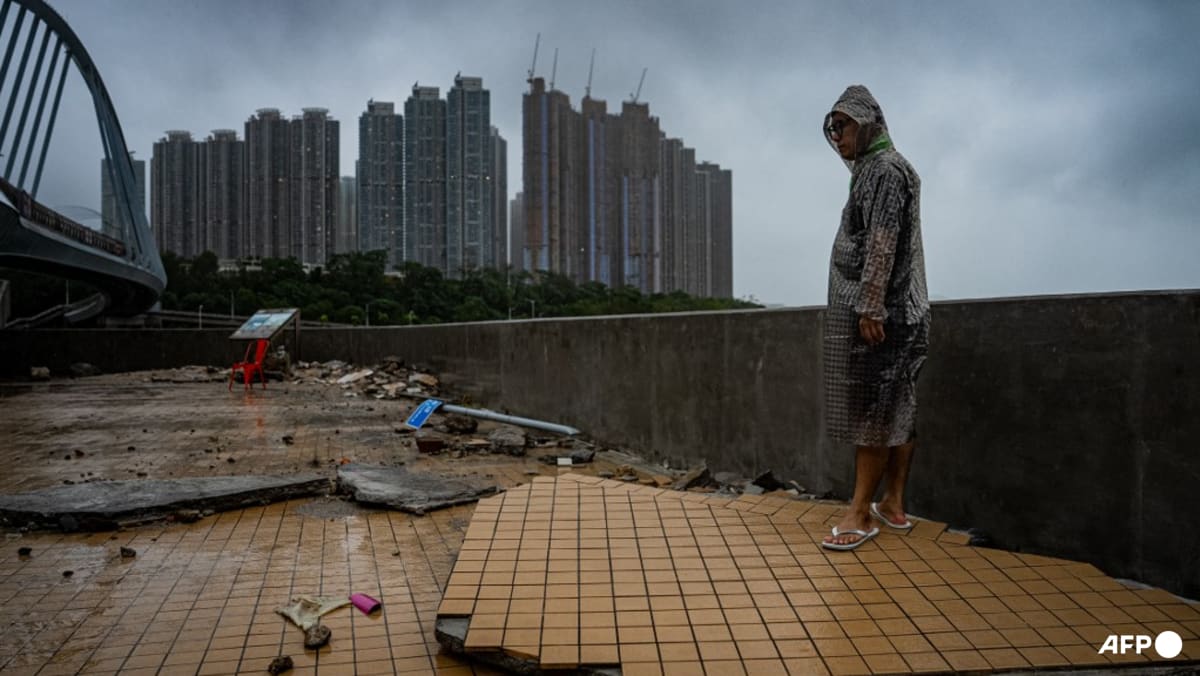CLIMATE DEFENCE STRATEGY
But experts caution that sluggish progress risks derailing those targets, leaving the city more vulnerable to extreme heat, rising sea levels and increasingly severe storms.
In the first eight months of this year, the city has already been hit by four typhoons — compared with none during the same period last year.
This comes on top of the city’s regular typhoon season, which typically runs from June to October.
Most recently, Super Typhoon Ragasa brought Hong Kong to a standstill about a week ago.
At the same time, Hong Kong is grappling with rising temperatures — a trend expected to worsen as global greenhouse gas emissions continue to climb.
“Based on a wide range of assumptions about the greenhouse gas emissions in the future, like in the summer time, the average temperature will increase by about 1 to 3 degrees Celsius for Hong Kong,” said Professor Gao Meng of the Hong Kong Baptist University’s department of geography.
“If we further consider the impacts of humidity, these numbers can be greater, by about 1.6 to 3.5 degrees Celsius for Hong Kong. That’s a huge change.”
The Hong Kong government has set a target for renewable energy to supply up to 10 per cent of the city’s electricity within the next decade.
Yet in 2022, renewables accounted for only 0.9 per cent of total power generation, according to the International Energy Agency (IEA).
Some observers remain doubtful that the government will meet its goal.
Karen Ho, head of corporate and community sustainability for non-profit organisation WWF Hong Kong, said the city’s building energy code and new building requirements currently lack clear measures to ensure developers incorporate renewable energy systems into new projects.

